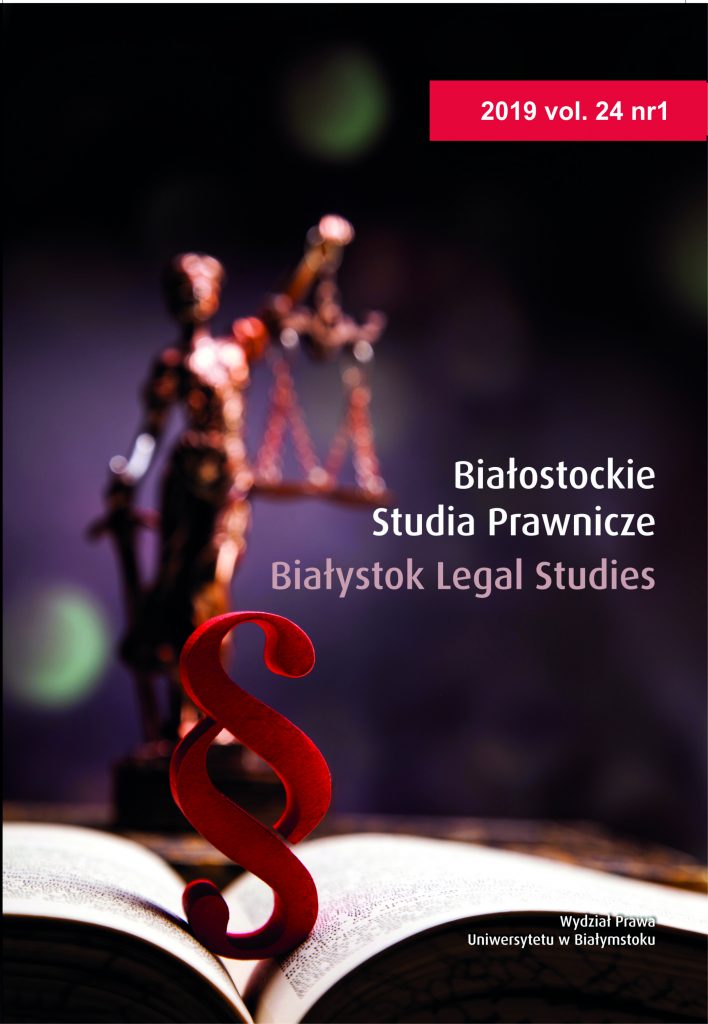The Advantages and Disadvantages of Italian Referendum Tools
Abstrakt
Direct democracy or pure democracy is a form of democracy in which people decide on policy initiatives directly. The article focuses the referendum as the main instrument of direct democracy in Italy and the main purpose of the analysis is to discuss the benefits and handicaps of Italian referendum tools. Particularly the abolishment of the quorum for the abrogative referendum that is the main goal for the development of the Italian direct democracy. The contribute demonstrate in eleven main reasons why the turnout requirement should be abolished: the vote should be free and decisive, meaning that citizens who participate in a referendum should be aware that their vote will be decisive, whereas those who choose not to go to the polls implicitly delegate their vote and decision to other voters. The future is the ongoing people’s initiative referendum draft which provides just a very reasonable approval quorum of 25%.Bibliografia
Altman D., Direct Democracy Worldwide, Cambridge 2014.
Asimakopoulos J., Social Structures of Direct Democracy: on the Political Economy of Equality, Chicago 2015.
Auer A., La justice constitutionnelle et la démocratie référendaire - Rapport de synthèse, in AA.VV., Justice constitutionnelle et démocratie référendaire, Strasbourg 1995.
Barbera A., Fusaro C., Corso di diritto pubblico, Bologna 2010.
Bardi L., Electoral Change and its Impact on the Party System in Italy, “Western European Politics”, 2009, no. 4.
Bardi L., Rhodes M., Politica in Italia, Bologna 1998.
Bellamy R., Bufacchi V., Castiglione D., Democracy and Constitutional Culture in the Union of Europe, London 1995.
Benedikter T., Più democrazia per l’Europa: la nuova iniziativa dei cittadini europei e proposte per un’Unione europea più democratica, Lavis 2010.
Boltho A., Vercelli A., Yoshikawa H. (eds.), Comparing Economic Systems: Italy and Japan, Basingstoke- New York 2001.
Bull M.J., Rhodes M. (eds.), Crisis and Transition in Italian Politics, London-Portland 2009.
Capretti A., Direkte Demokratie in Italien, in Heussner H.K., Jung O. (eds.), Mehr direkte Demokratie wagen. Volksentscheid und Bürgerentscheid: Geschichte, Praxis, Vorschläge, Munich 2009.
Constitutional court, ruling January 12, 2012, no. 13, http://www.cortecostituzionale.it/actionPronuncia.do (access February 03, 2019).
De Cecco M., Italy’ Dysfunctional Political Economy, “West European Politics”, 2009, no. 4.
Della Porta D., Portos M., O’Connor F.V., Social Movements and Referendums from Below: Direct Democracy in the Neoliberal Crisis, Bristol, 2017.
Dornbusch R., Nölling W., Layard R. (eds.), Postwar Economic Reconstruction and Lessons for the East Today, Cambridge-London 1993.
Fabbrini S. (ed.), L’europeizzazione dell’Italia, Roma-Bari 2003.
Grasse A., Italiens langer Weg in den Regionalstaat: die Entstehung einer Staatsform im Spannungsfeld von Zentralismus und Föderalismus, Opladen 2000.
Held D., Models of Democracy, Cambridge 2006.
Hibberd M., Conflict of Interest and Media Pluralism in Italian Broadcasting, “West European Politics”, 2007, no. 4.
Kaufmann B., Büchi R., Braun N., Handbuch zur Direkten Demokratie, Marburg 2008.
Komáromi L., Representative Government and Direct Democracy. Italy and the Main Direct Democratic Traditions in Europe in the 19th-20th Centuries, “Iustum Aequum Salutare”, 2014, no. 2.
Ministry of Interior, Election Archive, http://elezionistorico.interno.it/index.php?tpel=F (access February 03, 2019).
Morel L., Qvortrup M. (eds.), The Routledge Handbook to Referendums and Direct Democracy, London 2018.
Parliament, constitutional Law April 3, 1989, no. 2, http://www.gazzettauffi ciale.it/eli/id/1989/04/06/089G0146/sg (access February 03, 2019).
Parliament, Deputies Chamber constitutional bill no. 726 of June 13, 2018 by Ceccanti and others, http://www.camera.it/leg18/126?leg=18&idDocumento=726.
Parliament, Deputies Chamber constitutional bill no. 3124 of May 19, 2015 by Fraccaro and others, http://www.camera.it/leg17/126?idDocumento=3124 (access February 03, 2019).
Parliament, Deputies Chamber ordinary bill no. 4136 of November 4, 2016 by Mucci and others, http://www.senato.it/leg/17/BGT/Schede/Ddliter/47429.htm (access February 03, 2019).
Parliament, Law August 4, 1993, no. 276, http://www.senato.it/documenti/repository/leggi_e_documenti/raccoltenormative/25%20-%20elezioni/L.%20276%20-%201993/L276-93.pdf
(access February 03, 2019).
Parliament, Law December 21, 2005, no. 270, http://www.camera.it/parlam/leggi/05270l.htm (access February 03, 2019).
Parliament, Law May 25, 1970, no. 352, http://www.cortecostituzionale.it/documenti/download/pdf/CC_Fonti_LEGGE_25_%20maggio_%201970_n352_%2005032011.pdf (access February 03,2019).
Parliament, Senate Constitutional bill no. 1428 of March 4, 2009 by Peterlini, Ceccanti, Negri, Pinzger, Poretti, Procacci, Adamo, and Perduca: http://www.senato.it/japp/bgt/showdoc/frame.jsp?tipodoc=Ddlpres&leg=16&id=410179 (access February 03, 2019).
Parliament, TUEL (Consolidation Law on Local Government), Legislative Decree, August 18, 2000, no. 267, http://www.altalex.com/index.php?idnot=1091 (access February 03, 2019).
Pasquino G., Parlamento e Governo nell’Italia repubblicana,“Rivista italiana di scienza politica”, 2007, no. 1.
Qvortup M., Direct Democracy: a Comparative Study of the Theory and Practice of Government by the people, Manchester 2017.
Qvortup M., Referendums Around the World: the Continued Growth of Direct Democracy, New York 2014.
Ratto Trabucco F., Rifl essioni sulla prima attuazione dell’art. 132, secondo comma, Cost., dopo sessantuno anni di vita: l’esame del disegno di legge di variazione territoriale regionale e
l’acquisizione dei pareri regionali sulla scorta del “caso Alta Valmarecchia”, “Le Istituzioni del federalismo”, 2009, no. 3-4.
Ratto Trabucco F., Sulla presunta incostituzionalità del quorum della maggioranza assoluta sugli iscritti alle liste elettorali per i referendum territoriali ex art. 132 Cost., “Le Istituzioni del federalismo”, 2007, no. 6.
Ruth S.P., Welp Y., Whitehead L., Let the People Rule? Direct Democracy in the Twenty-first Century, Colchester 2017.
Suksi M., Bringing in the People. A Comparison of Constitutional Forms and Practices of the Referendum, Dordrecht-Boston 1993.
Sartori G., Dove va il Parlamento?, Napoli 1963.
Scott A., The Fragmentary State of the Twenty-first Century: an Elementary Conceptual Portrait, Indiana 2008.



